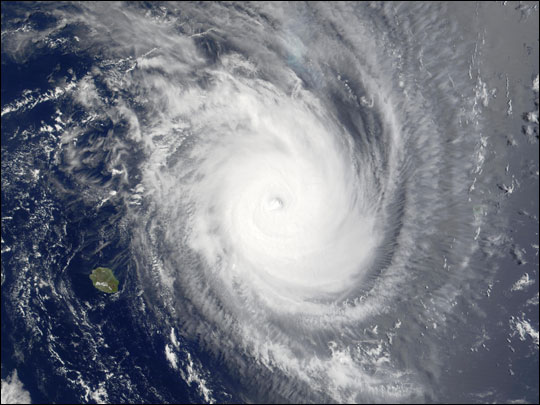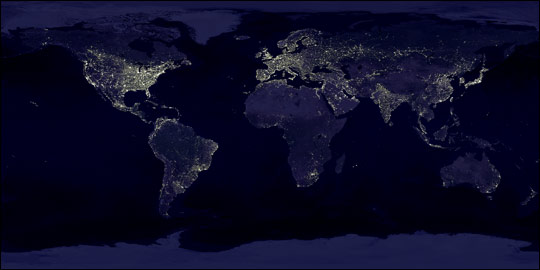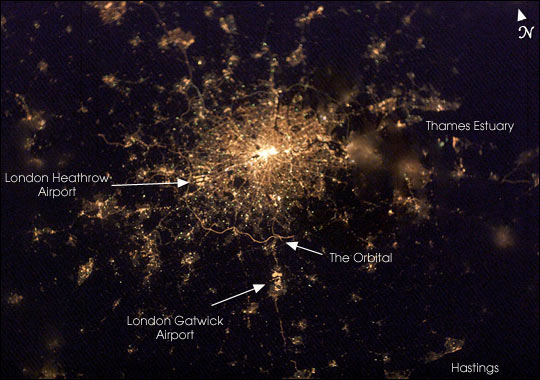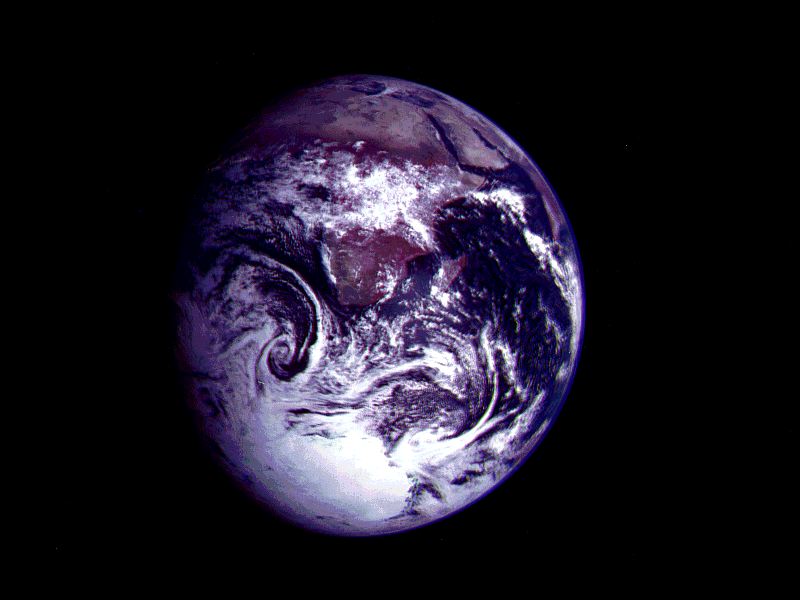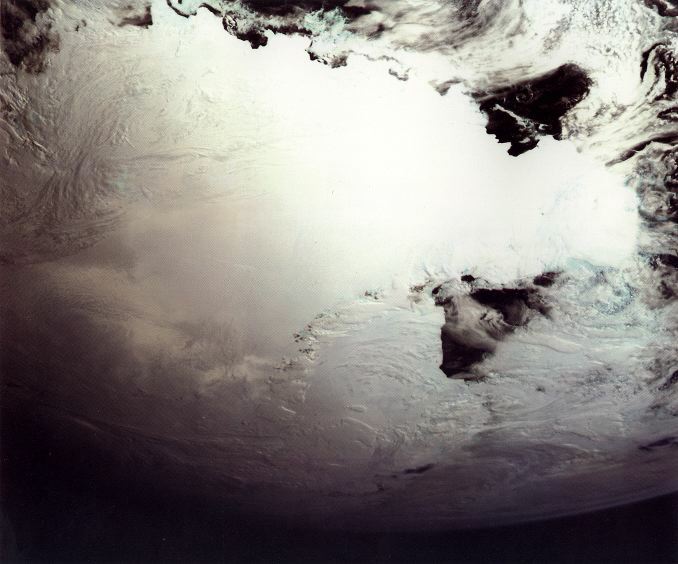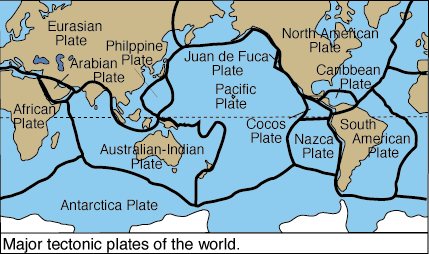The third planet from the Sun and the only known place in the Universe where life exists.
71% of the planet is covered in liquid water, this has become crucial for life. It is known as "Goldilock's Planet" because it is not too hot that the water boils away, and not too cold that the water freezes.
The land masses (as well as the oceans) are sitting on top of tectonic plates. The crust of the Earth is cracked like an egg and each section is called a tectonic plate. These plates move around causing earthquakes. At the places where they join, volcanoes form. These areas are called fault lines.
The atmosphere is made up of 78.1% Nitrogen and 20.9% Oxygen. The other 1% is made up of water vapour and other gases like Carbon Dioxide.
Carbon Dioxide has been found to play a big role in the Greenhouse Effect. Scientists suggest that Carbon Dioxide levels have been increasing which can lead to an increase in "Global Warming". A combination of increased population and deforestation is thought to be the main cause. There are many sceptics to this theory.
The atmosphere is very active. Powered by the Sun, it is constantly moving around creating weather systems. The Earth is tilted at 23.5 degrees, this means some times of the year, one hemisphere is pointing closer to the Sun than the other, this effects the atmosphere and therefore the weather systems, which gives us seasons.
The Earth has a magnetic field. This is generated from the core of swirling molten iron. This field protects the Earth from Solar Winds. Currently, the North magnetic pole is in the Arctic, and the south one in is in Antarctica. There is evidence that suggests that these have switched throughout history. If this happened today, the result would be catastrophic.



